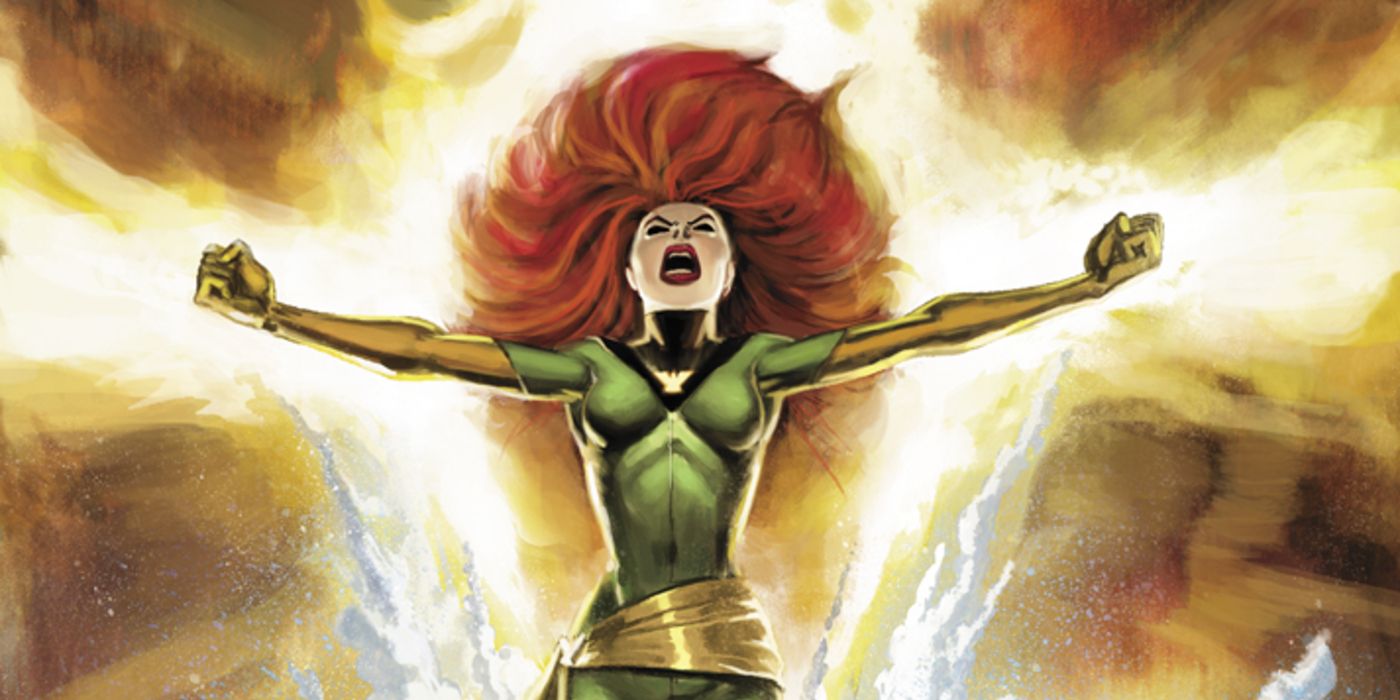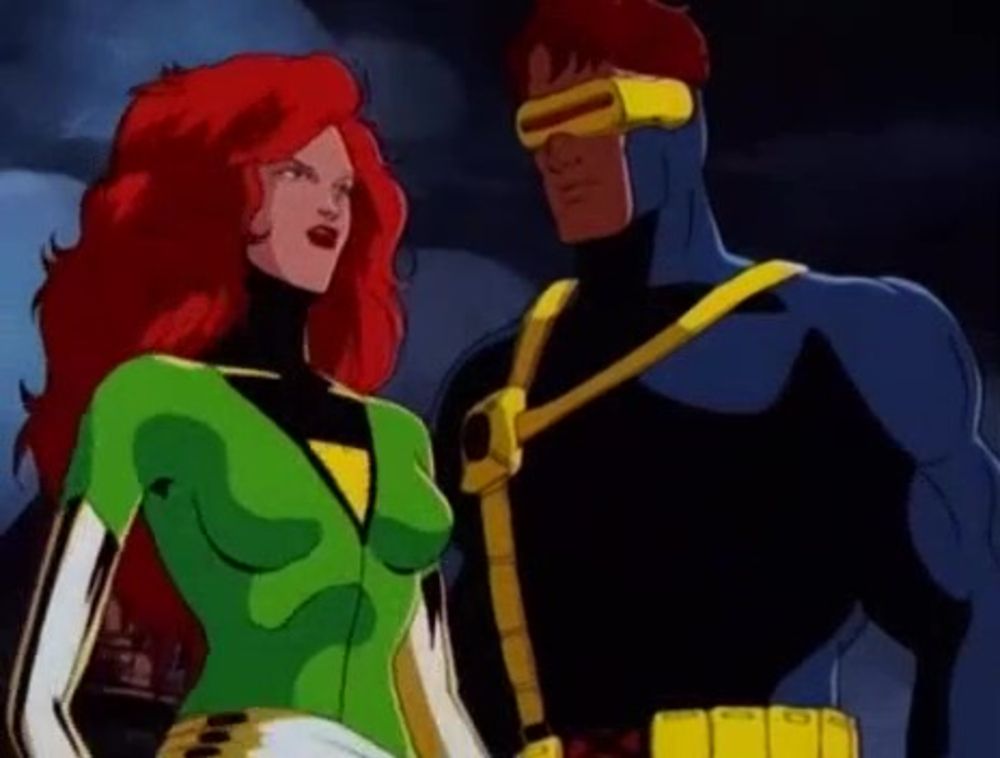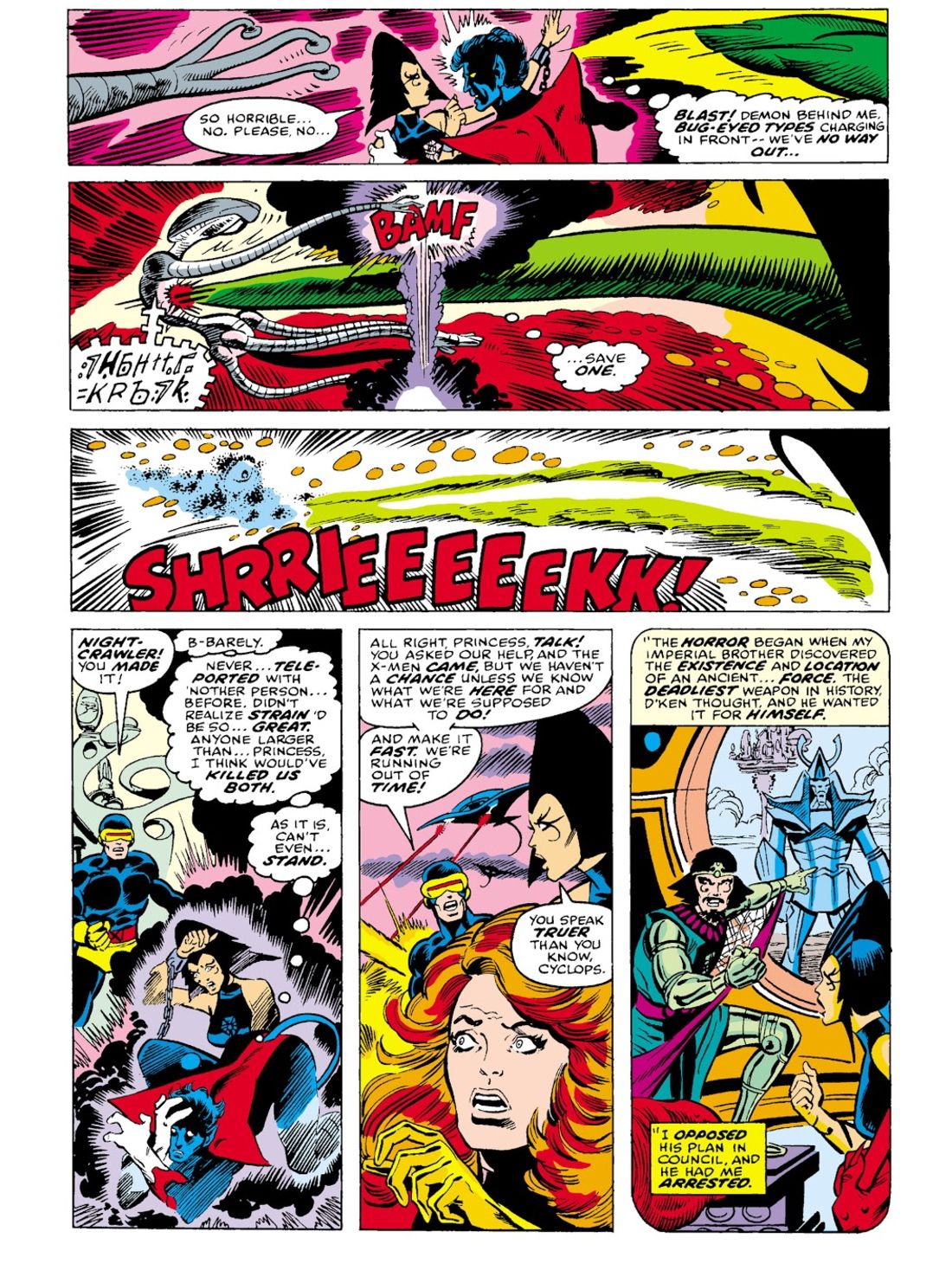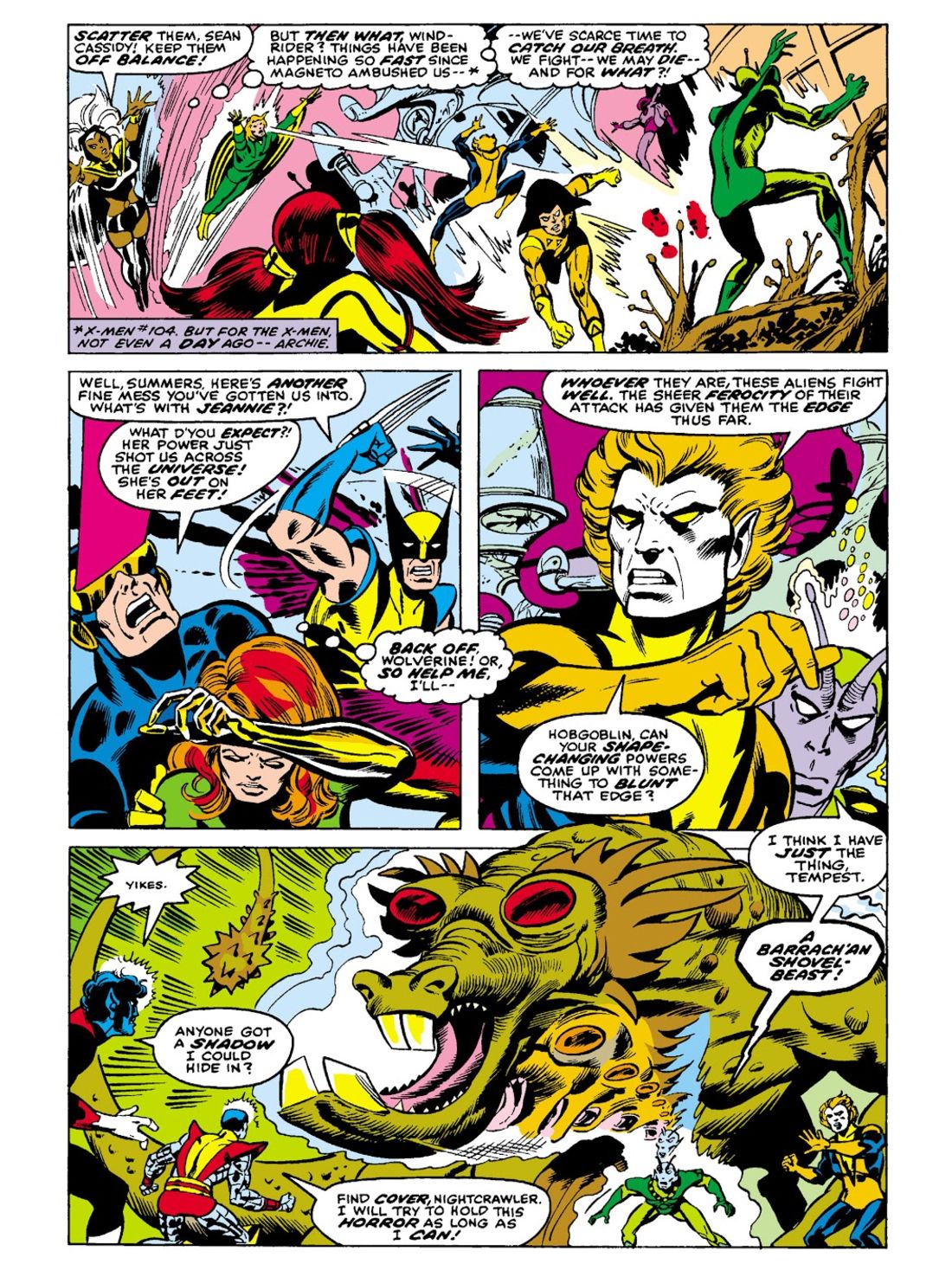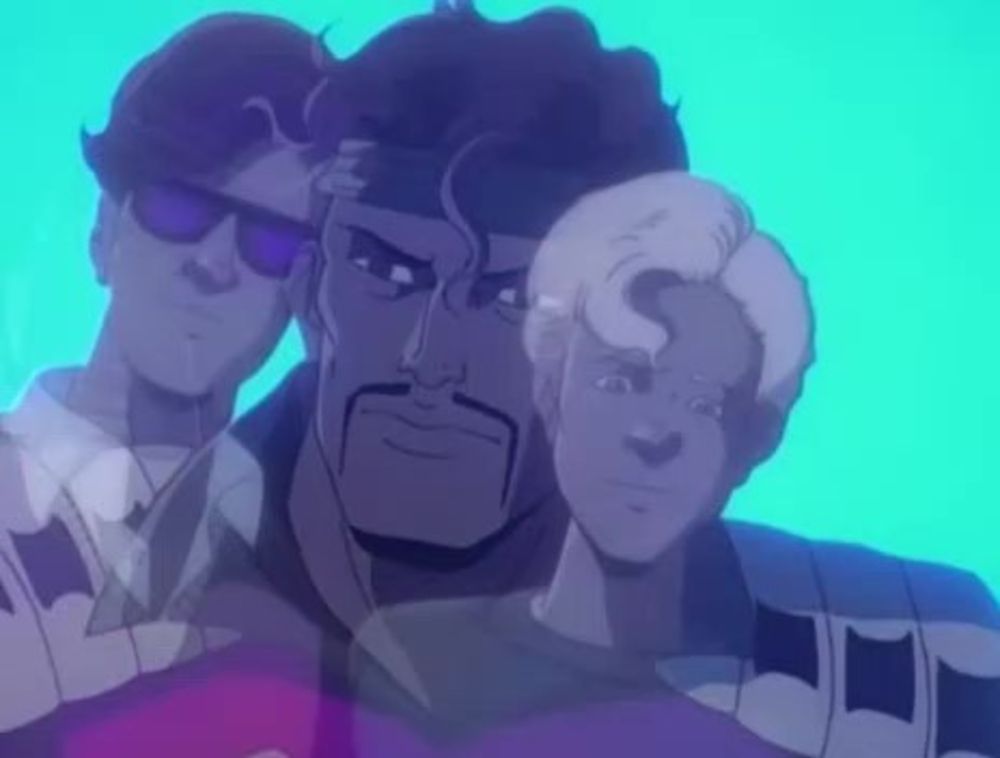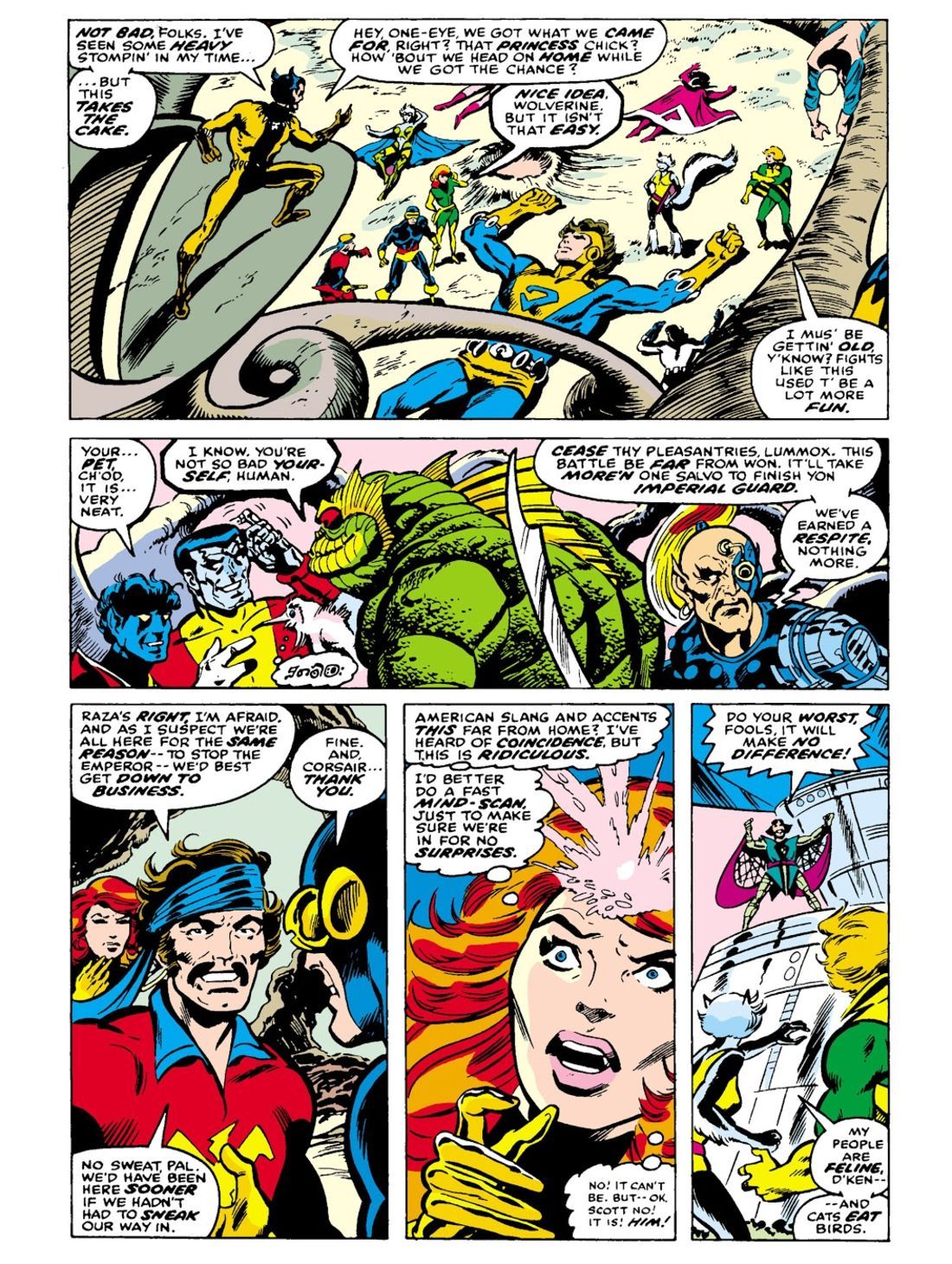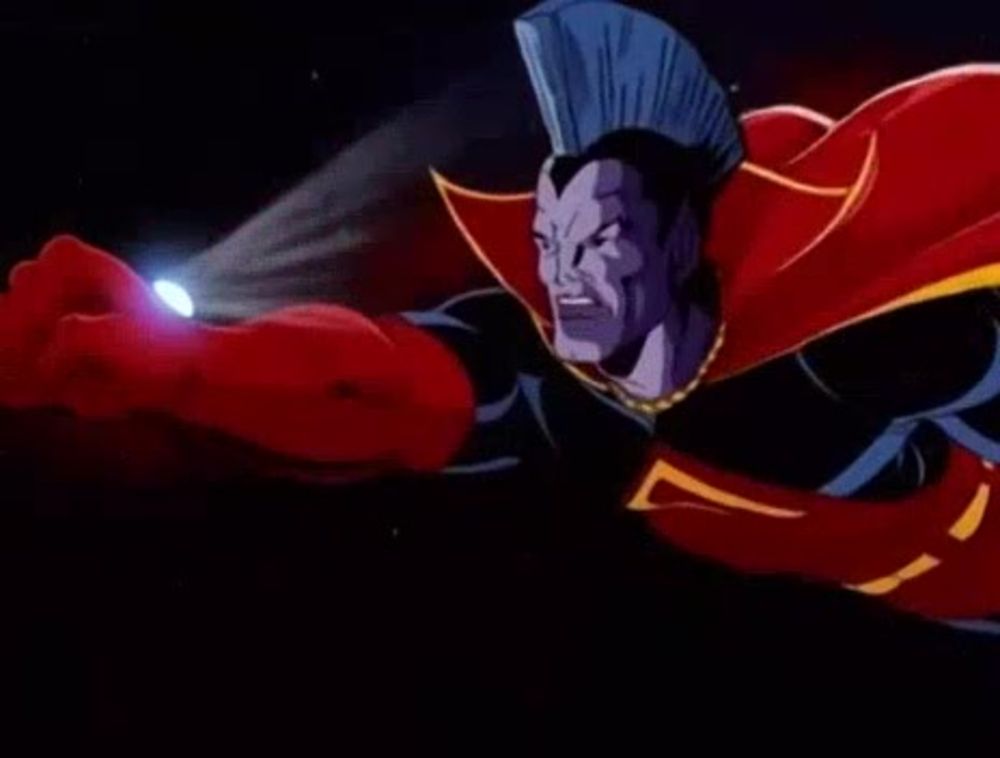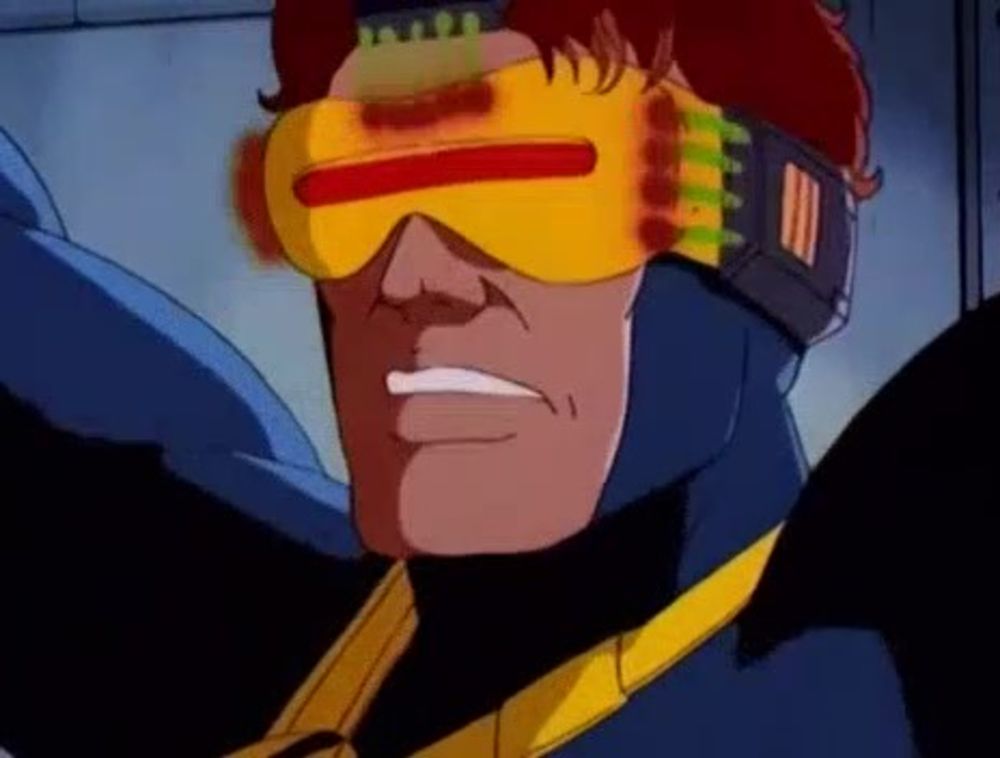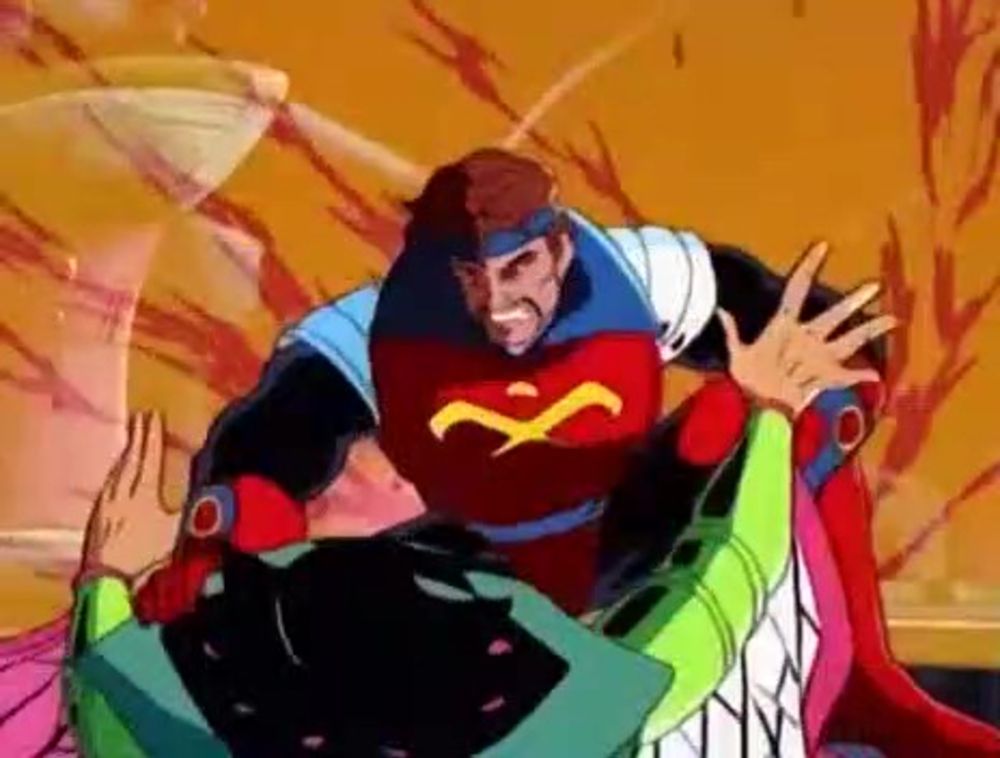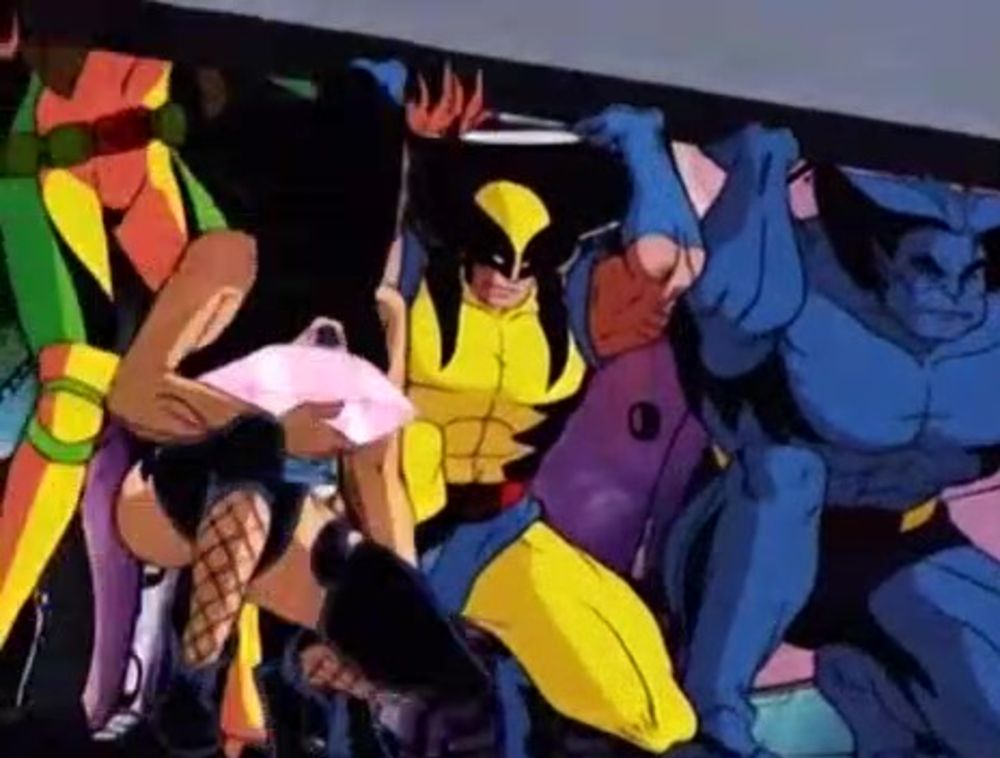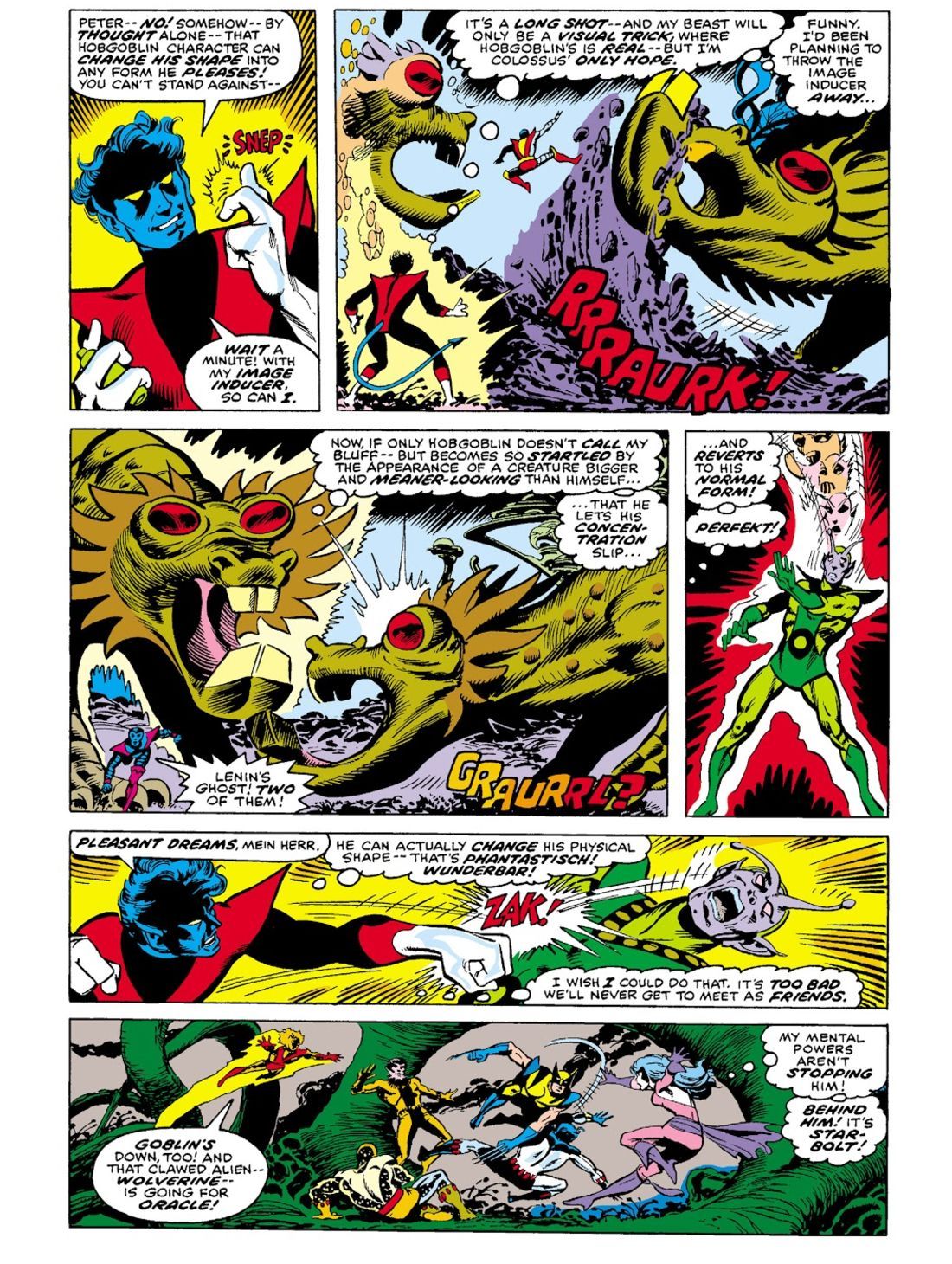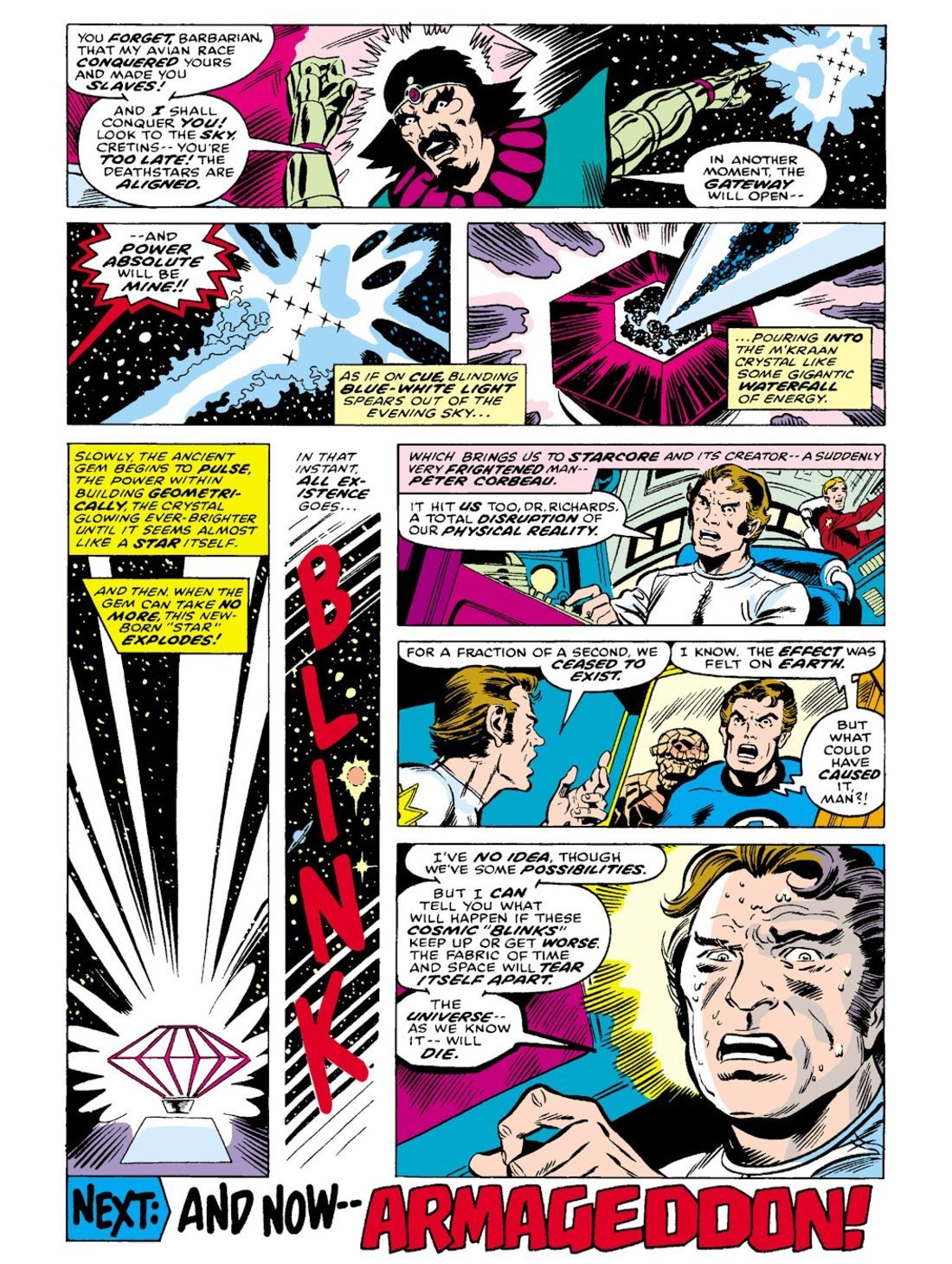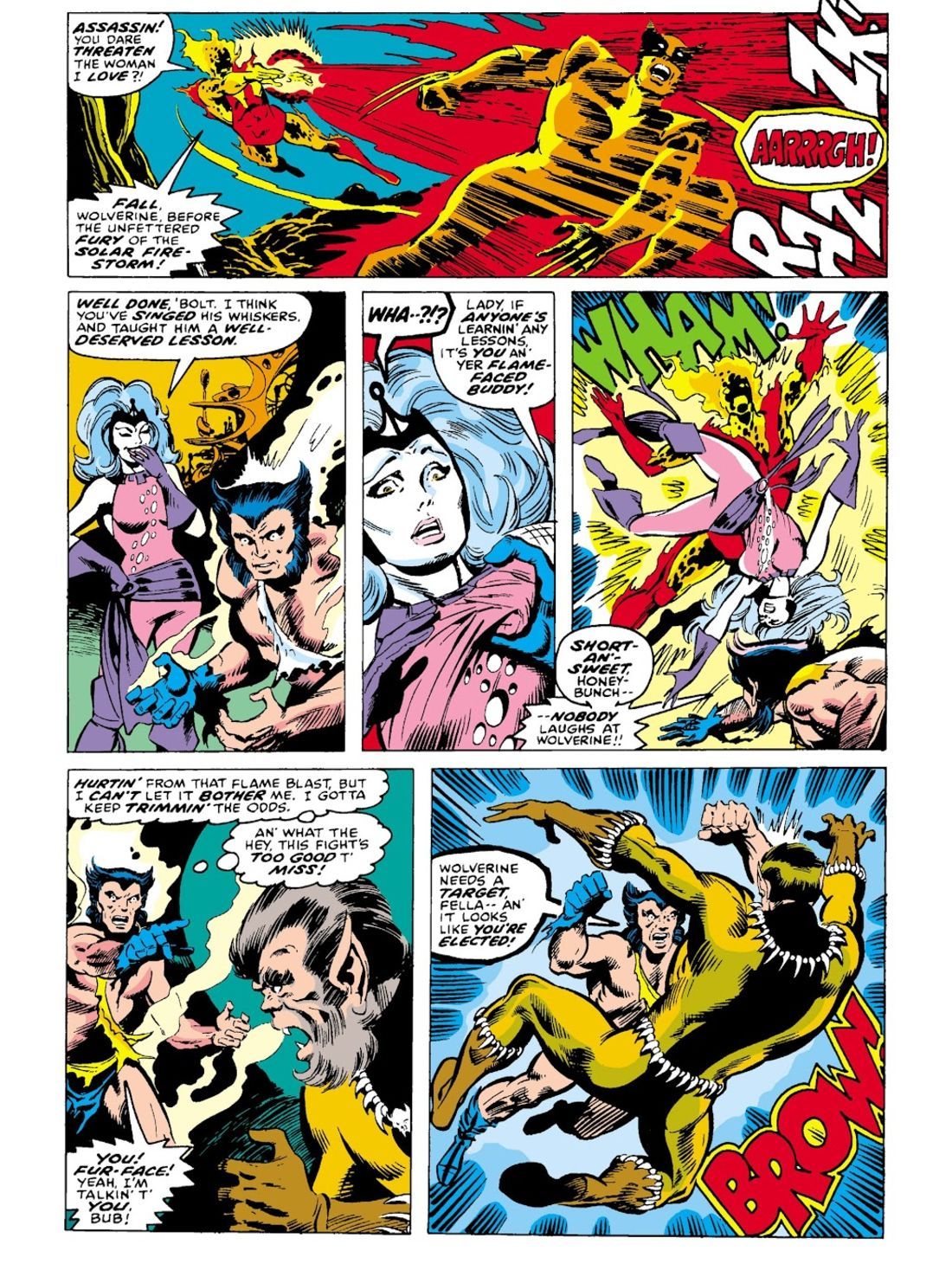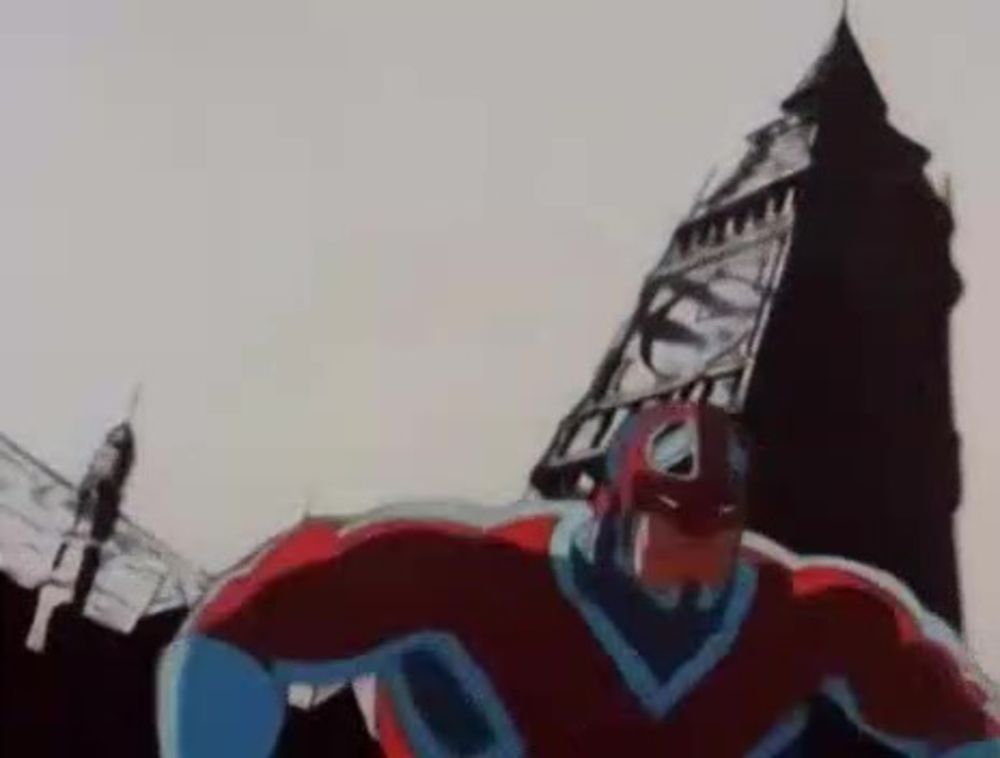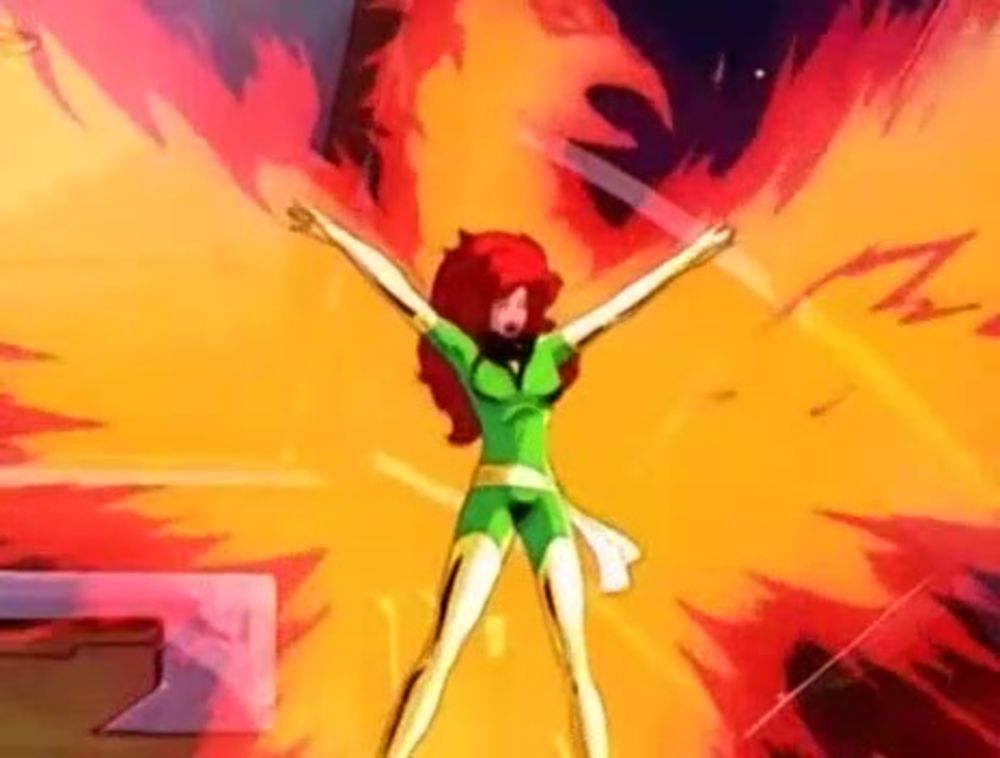Welcome to Adventure(s) Time's eighty-fourth installment, a look at animated heroes of the past. This week, we're returning to X-Men: The Animated Series and its adaptation of the initial Phoenix storyline. This run of comics is pretty crazy, and watching it unfold within the structure of the cartoon has been interesting.
From writer Mark Edward Edens comes "The Phoenix Saga Part 4: The Starjammers." Shockingly, it introduces the Starjammers to the cartoon's canon. Inspiration for the episode comes from Uncanny X-Men #107-108, although it's very much a loose adaptation at times.
As the episode opens, the X-Men are reunited, following Phoenix's impressive defeat of Gladiator. Lilandra fears she can't reach her ship, but Phoenix again uses these awesome new powers to transport the X-Men inside. We discover Lilandra has smuggled the M'Kraan Crystal away from D'Ken, her mad brother. Who, unfortunately for Lilandra, is also the emperor of their people.
This deviates from the comics storyline, which played the Crystal as a mystery until later. In fact, as late as Uncanny X-Men #107, Lilandra is still claiming that D'Ken was pursuing a "weapon" that can end all reality.
There's a sense reading these issues that creators Chris Claremont and Dave Cockrum are making up many of the details on the fly. That's not a knock on the stories; it gives them a wild kind of energy. The cartoon's producers, however, are coming at this story with twenty years of hindsight. They're folding events together, streamlining ideas.
Another interesting variation is the show's introduction of the Starjammers at this point in the story. (As they attack Lilandra's ship, steal the Crystal, and kidnap Cyclops.) The initial storyline has the X-Men facing D'Ken's Imperial Guard first...
...with the Starjammers appearing as the team's saviors during a low point in the fight. Here, we meet the Starjammers as likely villains, just blasting away at the ship and kidnapping Cyclops.
The full story is soon explained. Corsair, leader of the Starjammers, reveals he only wants the Crystal as bait to lure D'Ken. The script isn't explicit in stating this, but older viewers will certainly pick up that D'Ken killed Corsair's wife and he's out for revenge. (A plot point adapted from the comics.) An interesting twist in Edens' script has Corsair using Cyclops as D'Ken's assassin!
Cyclops of course refuses to murder anyone, but he does soon bond with Corsair. X-Fans instantly know why...Corsair the space pirate is, of course, Cyclops' father. The moment where Jean pulls the truth from Corsair's mind...
...is darn similar to the sequence from the original comic.
The communique between Corsair and D'Ken provides viewers their first real glimpse of the Imperial Guard. Gladiator reappears, attempting to counsel D'Ken, but reasoning with the lunatic is futile. The initial voice actor does bring a regal quality to Gladiator, one missing when the role was recast for later broadcasts. Looking back, it's easy to see why fans of Richard Epcar are irritated his portrayal of Gladiator has been erased.
What's notable about the adaptation is the framing of Cyclops' meeting with D'Ken. He's in a position to kill the man who murdered his mother. The audience knows this, but not the character. Even with Corsair's goading, we don't know what Cyclops' decision would be, thanks to the X-Men's abrupt arrival.
Would he assassinate D'Ken in order to prevent the madman from gaining a lethal (cosmically lethal) weapon? Would he kill D'Ken merely if he knew the truth about his mother?
What about Corsair? If he knew Cyclops was his son, would he be using him as an assassin? Clearly, his pitch to Cyclops would be different if he knew the full story. But would he want his son to be in this position? Would he feel guilty about exploiting Cyclops this way? It's a clever set-up, one that might've gone over some of the viewers' heads.
The tense build-up explodes into a massive fight between the X-Men, Starjammers, and Imperial Guard. Even if the action sequences on the show often suffer from mediocre animation, the producers attempt to add personality in these moments. One of the most endearing sequences in the storyline comes from the X-Men's attempt to pry open a door while escorting Lilandra's escape.
Beast is unable to keep it open by himself. Wolverine offers his help. The door continues to press down. "It was the thought that counted," Beast muses, his delivery perhaps sarcastic, perhaps melancholy. Rogue then appears in the doorway, easily lifting the door and allowing the X-Men to pass. Now, perhaps Rogue isn't that much more powerful than Beast, but what a memorable moment.
Keeping characters in mind during the big fight scenes is a hallmark of Chris Claremont's writing. Even within the chaos of the X-Men's battle with the Guard, Claremont writes a lovely interpretation of Nightcrawler.
In just a few panels, we have Nightcrawler musing on the alienation caused by his physical appearance. He mentions his holographic image inducer, a device he's considered abandoning. (Not only does this provide some insight into Nightcrawler's thought process, but it calls back to his use of the device during the first installment of this story arc.) And then, isn't this heartwarming, he's reflecting on the possibility of actually befriending the alien he's fighting.
In the episode's end, D'Ken gains the upper hand, stealing the M'Kraan Crystal. We end on a cliffhanger, fitting for the penultimate chapter in the five-part event. The comic, meanwhile, has the Crystal overwhelmed by an alignment of stars. (D'Ken, bizarrely, thinks he can harness this power.)
Here, the Crystal's disruption is literally causing reality to blink out of existence. And, wouldn't you know it, this story is also concluded in the next installment.
THE WRAP -UP
DESIGN-Y
Uncanny X-Men #107 features what could have been a seminal moment in Wolverine's history. Dave Cockrum, not entirely happy with the character, had designed a new look for Wolverine. It debuts here...worn by Fang of the Imperial Guard.
The idea was for Wolverine, in need of a new outfit, to steal Fang's costume. Which he does! Readers didn't realize it was intended as a permanent switch, however. Incoming artist John Byrne recalls Cockrum telling him, "This is Wolverine's new costume. It's a b*tch to draw!" Byrne decided not to stick with the look. Notice the opening page of Uncanny X-Men #109, which has Wolverine peeling the costume off.
CONTINUITY NOTES
Check out cameos from Captain Britain, the Inner Circle, and Dr. Strange as Phoenix transports the X-Men away from Earth.
BUT WHERE'S THE BARRACH'AN SHOVEL-BEAST?
Let's remember that this is not only the longest storyline for the show, but also its first real exploration of the comic's sci-fi elements. If the producers wished, they could've exploited these concepts much earlier. Showrunner Eric Lewald, in his book Previously on X-Men, states the theme of prejudice was far more important to him when developing the show. (When reading the newer issues of the comics, it didn't come across to him as a major priority for the writers.)
While the themes of prejudice and alienation are of course important to the concept, the truth is, the majority of memorable X-storylines barely touch on them. They're cool adventure stories, populated with believable characters the audience can relate to. The show moves into that territory rather easily, literally transporting the cast from Earth to the stars.
Grounding this episode in a very human emotion -- Corsair's hatred of D'Ken -- is smart. And even if a dozen things are happening, the team's unease over Jean's transformation isn't overlooked. Through it all, this feels like an X-Men story. Far beyond the scope of what we saw in the first episode, but still loyal to the strongest elements of the show.
So that’s all for now. If you have any suggestions for the future, just leave a comment or contact me on Twitter. You can also check out some of my fiction writing for free over at Smashwords.

